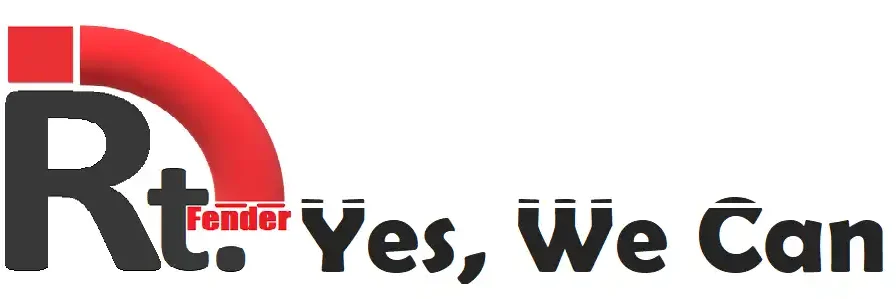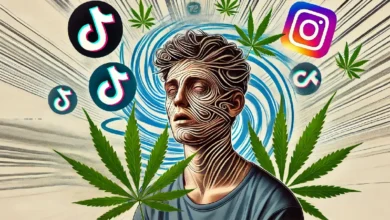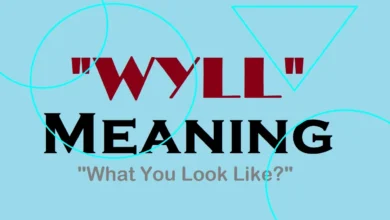
In an era where information is at our fingertips, the rise of online platforms such as “Busted Newspaper” has brought new dimensions to public awareness and privacy concerns. These websites aggregate and publish arrest records, mugshots, and other details about individuals who have been apprehended by law enforcement. While their proponents argue for transparency and the public’s right to know, critics highlight significant ethical and privacy issues. before digging deep into the “Busted Newspaper,” history, operations, and societal impacts, we need to have a short look at “What is Busted Newspaper?” let’s start!
- What Is Busted Newspaper?
- The Public’s Right to Know
- Privacy Concerns and Ethical Issues
- Legal Challenges and Regulatory Responses
- The Role of Technology and Social Media
- The Human Impact: Case Studies
- 1. John Doe – The Wrongfully Accused
- 2. Mary Smith – The Stigmatized Nurse
- 3. James Johnson – The Small Business Owner
- 4. Lisa Green – The College Student
- 5. Robert Brown – The Military Veteran
- 6. Emily White – The Young Professional
- 7. David King – The Retiree
- 8. Sarah Lee – The Social Worker
- 9. Michael Adams – The Athlete
- 10. Olivia Martinez – The Entrepreneur
- Balancing Transparency and Privacy: Finding a Middle Ground
What Is Busted Newspaper?
“Busted Newspaper” is a website that aggregates and publishes arrest records, mugshots, and information about individuals who have been arrested. This platform often collects data from various law enforcement agencies and makes it publicly accessible. The purpose of this site is to inform the public, though they can also be controversial due to privacy concerns and the potential for reputational damage to those featured, regardless of whether they are ultimately found guilty or innocent.
History and Evolution
The concept of publicly sharing arrest records is not new. Traditionally, local newspapers would publish arrest logs and mugshots as part of their crime reporting. However, with the advent of the internet, this practice has transformed significantly. Websites like “Busted Newspaper” have taken this concept to a new level, offering centralized, easily accessible databases of arrest records.
Launched in the early 2000s, “Busted Newspaper” quickly gained traction. Unlike traditional media, which would only cover local arrests, these websites could cover multiple jurisdictions, offering a more comprehensive view of criminal activity across regions. This shift was facilitated by the digitalization of public records and the increasing availability of such data from law enforcement agencies.
How “Busted Newspaper” Operates
“Busted Newspaper” and similar websites operate by collecting arrest records and mugshots from various law enforcement agencies. These records, which are public information, are then compiled and published on the website. The process involves:
- Data Collection: Websites collect data from public records databases, which are often maintained by state and local governments. This data includes the individual’s name, photo, charges, and the date of the arrest.
- Aggregation and Publication: The collected data is aggregated into a centralized database. Users can search for individuals by name, location, or date of arrest. The information is presented in an accessible and searchable format.
- Revenue Generation: Many of these websites generate revenue through advertising and “removal fees.” Some sites charge individuals a fee to have their mugshots and arrest records removed from the database, a practice that has sparked significant controversy.
The Public’s Right to Know
Proponents of “Busted Newspaper” argue that such platforms serve a critical role in promoting transparency and public safety. By making arrest records readily available, these websites provide a valuable service to the community. The arguments in favor include:
- Transparency and Accountability: Publicizing arrest records holds individuals accountable and deters criminal behavior. It ensures that the public is aware of criminal activities in their community.
- Public Safety: Access to arrest records can help individuals make informed decisions about their safety. For instance, knowing that a neighbor or acquaintance has been arrested for a serious crime can be crucial for personal safety.
- Journalistic Value: These websites often fill gaps left by traditional media, which may not cover all arrests due to space and resource constraints.
Privacy Concerns and Ethical Issues
Despite the arguments for transparency, “Busted Newspaper” faces significant criticism for its impact on privacy and the potential harm to individuals. Key concerns include:
- Presumption of Innocence: One of the most significant criticisms is that these websites can undermine the presumption of innocence. Individuals are often listed on these sites before they have been convicted of any crime, leading to public shaming and stigma.
- Reputational Damage: Being featured on “Busted Newspaper” can have long-lasting repercussions for individuals, affecting their employment, relationships, and overall reputation. Even if charges are dropped or the individual is acquitted, the damage to their reputation can be irreparable.
- Exploitation for Profit: The practice of charging fees to remove mugshots raises ethical concerns. Critics argue that it exploits individuals who are desperate to clear their names, turning a public service into a profit-driven enterprise.
Legal Challenges and Regulatory Responses
The operations of “Busted Newspaper” have not gone unchallenged. Several legal and regulatory measures have been implemented to address the concerns surrounding these websites.
- Legislation: Some states have enacted laws aimed at regulating the publication of mugshots and arrest records. These laws often prohibit websites from charging removal fees or require them to remove records upon request if the charges are dropped or the individual is acquitted.
- Lawsuits: Individuals have filed lawsuits against these websites, alleging defamation, invasion of privacy, and other harms. While some of these lawsuits have been successful, the legal landscape remains complex, as the publication of arrest records is generally protected by the First Amendment.
- Law Enforcement Policies: In response to the controversy, some law enforcement agencies have changed their policies regarding the release of mugshots and arrest records. For example, they may limit the circumstances under which mugshots are released to the public.
The Role of Technology and Social Media
The rise of “Busted Newspaper” is closely tied to advancements in technology and the proliferation of social media. These platforms amplify the reach and impact of arrest records, making it easier for information to spread quickly.
- Search Engine Optimization (SEO): Many mugshot websites employ SEO tactics to ensure that their pages rank highly in search engine results. This means that when someone searches for an individual’s name, their mugshot and arrest record may be one of the first results to appear.
- Social Media Sharing: Mugshots and arrest records can be easily shared on social media, further spreading the information and increasing its visibility. This can lead to widespread public shaming and harassment.
- Data Scraping and Aggregation: Advances in data scraping technology have made it easier for these websites to collect and aggregate large volumes of data from multiple sources, enhancing their ability to provide comprehensive arrest records.
The Human Impact: Case Studies
To truly understand the impact of “Busted Newspaper,” it’s important to consider the stories of those who have been featured on these sites. These personal accounts highlight the often devastating consequences of having one’s arrest record and mugshot published online. Here we shortlisted some case studies for better acknowledgement;
1. John Doe – The Wrongfully Accused
Background:
John Doe, a 32-year-old teacher, was mistakenly identified and arrested for a crime he did not commit. His name and mugshot were published on “Busted Newspaper,” and within hours, the information spread through his community.
Impact:
- Employment: John was immediately placed on administrative leave from his teaching position. Despite being cleared of all charges within a week, the school board hesitated to reinstate him, fearing backlash from parents.
- Reputation: John’s neighbors and friends began to distance themselves, and rumors about his alleged crime persisted even after his exoneration.
- Mental Health: The experience led to severe anxiety and depression, requiring John to seek professional help.
Outcome:
John filed a lawsuit against the website for defamation and invasion of privacy. The case brought attention to the issue of wrongful accusations and the need for better verification before publishing such information.
2. Mary Smith – The Stigmatized Nurse
Background:
Mary Smith, a registered nurse, was arrested for a minor offense related to a misunderstanding over a prescription. Her mugshot and arrest record were published online.
Impact:
- Employment: Mary faced disciplinary action at work and was temporarily suspended pending an investigation.
- Reputation: Colleagues and patients began to treat her differently, questioning her professionalism and integrity.
- Social Life: Mary’s social circle shrank as friends and acquaintances judged her based on the online records.
Outcome:
Mary’s charges were eventually dropped, but the damage to her reputation was lasting. She had to move to a new city to rebuild her career and social life.
3. James Johnson – The Small Business Owner
Background:
James Johnson, a small business owner, was arrested for a DUI after a late-night event. His mugshot appeared on “Busted Newspaper,” impacting his business.
Impact:
- Business: Customers began to avoid his store, leading to a significant drop in sales.
- Reputation: James’s image in the local community was tarnished, affecting his personal and professional relationships.
- Family: The incident caused strain within his family, particularly with his teenage children who faced bullying at school.
Outcome:
James completed a rehabilitation program and successfully petitioned to have his mugshot removed from the website, but rebuilding his business and reputation took years.
4. Lisa Green – The College Student
Background:
Lisa Green, a 20-year-old college student, was arrested during a protest. Her involvement was non-violent, but her arrest led to her mugshot being published online.
Impact:
- Academic: Lisa faced disciplinary action from her university, including a temporary suspension.
- Reputation: The incident affected her standing with peers and professors, who questioned her judgment.
- Future Prospects: Concerned about the long-term impact on her career, Lisa worried that future employers would find the mugshot during background checks.
Outcome:
Lisa’s charges were dropped, but the incident remained a blot on her record. She became an advocate for students’ rights and worked with organizations to help others facing similar issues.
5. Robert Brown – The Military Veteran
Background:
Robert Brown, a decorated military veteran, was arrested for a minor altercation. His arrest and mugshot were publicized, leading to significant personal and professional consequences.
Impact:
- Employment: As a security consultant, Robert lost several contracts due to the negative publicity.
- Reputation: His standing in the veteran community was affected, with many questioning his conduct.
- Mental Health: The stress from the incident exacerbated Robert’s PTSD, leading to a decline in his mental health.
Outcome:
Robert sought legal assistance to have his mugshot removed and worked with veteran support groups to raise awareness about the challenges faced by veterans in similar situations.
6. Emily White – The Young Professional
Background:
Emily White, a rising star in a marketing firm, was arrested at a party for possession of a small amount of marijuana. Her mugshot was published on “Busted Newspaper.”
Impact:
- Employment: Emily faced suspension and a review of her conduct by her employer.
- Reputation: Her professional image was tarnished, impacting her relationships with colleagues and clients.
- Social Life: Friends and family members distanced themselves, fearing association with a “criminal.”
Outcome:
Emily’s charges were later reduced, and she completed a diversion program. She became a vocal advocate for decriminalizing minor drug offenses and worked to support others in clearing their records.
7. David King – The Retiree
Background:
David King, a retired police officer, was arrested after a misunderstanding during a routine traffic stop. His mugshot was published online, causing distress.
Impact:
- Reputation: David’s long-standing reputation in his community was questioned, with many viewing him differently.
- Family: The incident caused embarrassment and strain within his family, particularly with his grandchildren.
- Mental Health: The stress and public shaming led to David experiencing severe anxiety and depression.
Outcome:
David sought legal counsel to clear his name and worked to educate the public about the importance of understanding the full context of arrest records.
8. Sarah Lee – The Social Worker
Background:
Sarah Lee, a dedicated social worker, was arrested during a domestic dispute involving her teenage son. Her mugshot was published, impacting her career and personal life.
Impact:
- Employment: Sarah faced suspension and an internal investigation at her workplace.
- Reputation: Her professional credibility was questioned, affecting her relationships with clients and colleagues.
- Social Life: Sarah faced judgment from her community, leading to social isolation.
Outcome:
Sarah’s charges were dismissed, but the incident remained a stain on her record. She became an advocate for better handling of domestic disputes and the privacy rights of social workers.
9. Michael Adams – The Athlete
Background:
Michael Adams, a college athlete with a promising future, was arrested for a minor altercation at a party. His mugshot was published, jeopardizing his athletic career.
Impact:
- Scholarship: Michael’s athletic scholarship was put on hold pending the outcome of his case.
- Reputation: His reputation on campus was severely affected, impacting his relationships with teammates and coaches.
- Future Prospects: Concerns about the impact on his future professional career in sports loomed large.
Outcome:
Michael’s charges were eventually dropped, but the incident affected his draft prospects. He used his experience to mentor other young athletes on making smart choices and handling legal issues.
10. Olivia Martinez – The Entrepreneur
Background:
Olivia Martinez, an entrepreneur, was arrested for a misunderstanding involving a business deal. Her mugshot and arrest record were published, causing significant harm.
Impact:
- Business: Olivia’s business suffered as clients withdrew their support and contracts were canceled.
- Reputation: Her standing in the business community was damaged, affecting her personal and professional relationships.
- Family: The incident caused tension within her family, particularly with her business partners who were also relatives.
Outcome:
Olivia’s charges were later cleared, but the recovery process for her business and reputation was long and arduous. She became an advocate for fair business practices and legal reform in handling public arrest records.
Balancing Transparency and Privacy: Finding a Middle Ground
The debate over “Busted Newspaper” and similar platforms highlights the need to balance transparency with privacy. While the public has a right to know about criminal activity, this must be weighed against the potential harm to individuals’ reputations and lives.
- Contextual Reporting: One approach is to provide more context in reporting arrest records. This could include information about the presumption of innocence, the status of the case, and any subsequent developments.
- Time Limits on Publication: Implementing time limits on how long arrest records are available online could help mitigate long-term reputational damage. For example, records could be removed after a certain period if no conviction is obtained.
- Clear Removal Policies: Websites should have clear, fair, and accessible policies for removing records, especially in cases where charges are dropped or individuals are acquitted. These policies should prioritize individuals’ rights to privacy and rehabilitation.
Conclusion
The phenomenon of “Busted Newspaper” exemplifies the complex interplay between public transparency and individual privacy in the digital age. While these platforms can serve important functions in promoting accountability and public safety, they also pose significant ethical and privacy challenges. As society continues to grapple with these issues, it is crucial to find a balance that respects both the public’s right to know and individuals’ rights to privacy and dignity. The ongoing dialogue and legal developments will shape the future of how arrest records are shared and accessed in our increasingly connected world.





